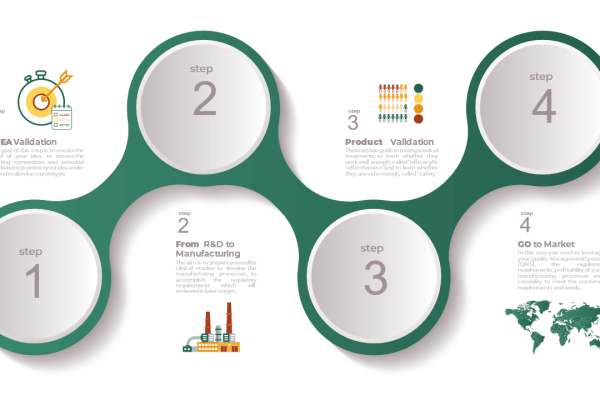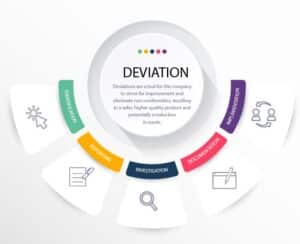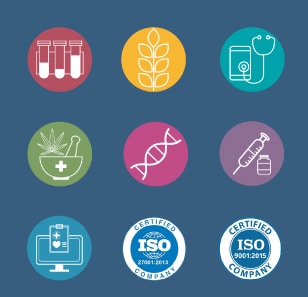Commercializing medical technology is challenging, often requiring 10 – 20 years just to bring new ideas to market. There is an essential need for better understanding of the overall process to the market. Challenges arising from time delays, misalignment with regulatory requirements and resource constraints potentially amount to substantial losses in value, for both companies and patients.
The aim of this short guide is to assist in the understanding of how commercialization and adoption of medical technology innovations in ecosystems can be achieved.
To simplify the understanding of the overall journey to the market we divided it into 4 phases:
- IDEA VALIDATION
The goal of this step is to ensure the need for your idea, to assess the existing competitors and potential market size, to protect your idea under IP and to develop a prototype.
- FROM R&D TO MANUFACTURING
The aim is to prepare yourself for clinical studies: to develop the manufacturing processes, to accomplish the regulatory requirements which will be reviewed in later stages.
- PRODUCT VALIDATION
There are two goals to testing medical treatments: to learn whether they work well enough, called “efficacy” or “effectiveness”; and to learn whether they are safe enough, called “safety”
- GO TO MARKET
In this step, you need to leverage your Quality Management System (QMS), the regulatory requirements, profitability of your manufacturing processes and capability to meet the customer requirements and needs.
1.IDEA VALIDATION
The goal of this step is to ensure the need of your idea, to assess the existing competitors and potential market size, to protect your idea under (Intellectual Property) IP and to develop a prototype.
1.1. Clinical need
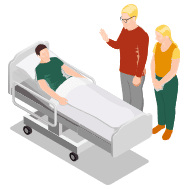
1.2. Market research & assessment
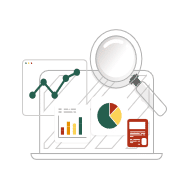
1.3. Intellectual Property
Law firms specializing in Intellectual Property conduct an assessment of the patents in this area and determine your Freedom to Operate (FTO)- the ability of your Company to develop, make, and market products without legal liabilities to third parties (e.g., other patent holders). In the Biological and Biotechnology space, the IP is an integral part of your submission package.
1.4. Proof of concept

2. FROM DEVELOPMENT TO MANUFACTURING
Now, you know that your idea meets the customer need, you know your competitors and potential market size, it is protected by IP and you have a proof of concept. The next goal is to reach the Clinical trials. The following steps shall be achieved prior to these trials (The order of tasks is only for demonstration- you can perform them consequently or in parallel).
2.1. Regulatory strategy establishment
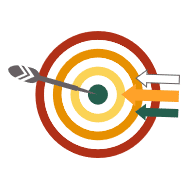
Having a regulatory expert can help you to define the requirements of your application dossier (FDA, EU-MDR Vs MDD, ROW). These requirements vary depending on device classification. You will also need to appoint a Notified Body to assess your device and an Authorized Representative to overlook this process for marketing in the EU, given your company is based outside the EU.
2. 2. Establishment of selected chapters of a Quality Management System (QMS)
For medical device companies (per relevant class), the expectations from the quality system are that you have all parts and pieces written and implemented by the time you market the device (or perform design transfer).
Many of the requirements (both FDA QSR regulations and ISO13485) also apply to you even prior to marketing, as they enable the organization to establish the desired design controls required to hold an inclusive Design History File (DHF).
If you are undergoing development, there are, at minimum, 5 parts of a quality system that you should have in place:
- Design Controls
- Risk Management
- Document & Record Control
- Supplier Management
- Basic Quality Management System elements (i.e. Changes, nonconformances, complaints etc.)
Early on (during the concept phase), you don’t need to spend too much time establishing and implementing all parts of quality systems, since it is important you focus on the product development, however it is recommended to realize that the medical industry will require the working environment governed by Quality Management System.
2.3. Manufacturing process development
Now you are planning to move to production of pre-clinical and clinical products. This usually will introduce modifications to the manufacturing process done under the development umbrella. If this is done, a change management process will modify the existing production process and will include a project to build a suitable manufacturing plan (the plan should include pre-clinical and clinical products where you will have to manufacture a certain amount of product).
The main keys to success in manufacturing processes & compliance with regulatory requirements are correct characterization and planning of the processes, equipment, utility and facility, as well as integrating Quality Assurance into the process as early as feasibly possible. All these will ensure an easier, safer and less expensive downstream outcome.
2.4. Manufacturing process qualification

Producing devices for clinical testing does not require a validated manufacturing process, but it is reasonable to expect the equipment used in production to have been properly installed and capable of operating as intended.
Upon design freeze (the step of design control, where the manufacturing processes are finalized, as well as suppliers and raw materials, are approved, to ensure reproducibility of the manufactured device) the following shall be achieved (from the regulatory aspect and to ensure robustness and reliability):
- Facility, Systems & Equipment qualifications- (Installation & Operational Qualification)
- Test Method Validation (TMV)- the processes for the release tests shall be validated
- Packaging and Shipment Validation – since the product shall be transferred to Pre-Clinical and Clinical sites, it is necessary to validate these processes prior to these studies
- Sterilization process Validation- For the sterile devices, shall be validated prior to Clinical studies
3. PRODUCT VALIDATION

3.1. Preclinical Studies
Deciding whether a device is ready for clinical trials. The ultimate goals of pre-clinical studies are to asses with the highest potential accurately model, in animals, the desired biological effect of a product in order to predict treatment outcome in patients (efficacy) and to identify and characterize all toxicities associated with a product in order to predict adverse events in people (safety). Pre-clinical tests include animal testing, toxicology, sterility and biocompatibility testing. To accommodate this, you will have to manufacture a certain amount of product, which is also amongst the reasons for implementing your manufacturing quality system before conducting pre-clinical studies.
3.2. Product registration
Clinical trials generate data on safety and efficacy. They are conducted only after they have received health authority and/ or ethics committee approval in the country where approval of the therapy is sought. These authorities are responsible for vetting the risk/benefit ratio of the trial—their approval does not mean the therapy is ‘safe’ or effective, only that the trial may be conducted in their region.
3.3. Clinical Trials

- Receive approval from your target country’s health authority and relevant institutional review board/independent ethics committee (IRB/IEC);
- Successful preclinical results;
- Successful design verification results (design inputs meet the design outputs);
- Risk Management Report (including benefits outweighing risks);
- Relevant parts of the quality management system implemented.
Clinical trials are experiments or observations done in clinical research. Such prospective biomedical or behavioural research studies on human participants are designed to answer specific questions about biomedical or behavioural interventions, including new treatments and known interventions that warrant further study and comparison. Clinical trials generate data on safety and efficacy. Clinical trials are usually a heavy burden on the company’s budget, therefore having a clinical expert guiding and/ or managing the clinical efforts can reduce expenses at a very effective percentage.
3.4. Gaining reimbursement and clearance for marketing
Here is where your reimbursement strategy is put into practice. Once your reimbursement consultant has helped you gather all the necessary documentation for each target country you are ready to start complying with their respective reimbursement procedures. The health authorities will now decide if your device should have a reimbursement price or if it should be integrated into a healthcare plan. Your consultant will also help you negotiate the pricing of your device with the health authorities.
At the same time, you will need to gain authority approval to get your device registered in your chosen markets.
4. GO TO MARKET

4.1. QMS compliance
In this step, the full Quality Management System needs to be in place, in accordance with ISO and/or FDA requirements (depended on the market you intend to access).
4.2. Moving to routine manufacturing process
Now you are planning to take the small capacity manufacturing process to the next phase of routine manufacturing. This may require modifying an existing production process (which may also include scaling-up).
The product profitability is depended on the manufacturing product efficiency.
4.3. Manufacturing process validation
Prior to commercialized step the following shall be achieved in term of Manufacturing Process Validation:
- Facility, Systems & Equipment qualification (IQ, OQ, PQ)
- Test Method Validation (TMV)- for all tests and verifications during the production and tests for Equipment Qualification
- Computerized system validation (CSV)
- Process Validation: Sterilization, Cleaning, Manufacturing,
- Shipping & Packaging Validation
- Cleaning Validation
4.4. Initial commercialization/ Limited introduction
Bring in your commercial team, it’s time to start the seeding trials. This is the first market where you will commercialize your device so you should have your commercial strategy set in place. Based on your first market feedback, determine whether your device is ready for commercial expansion. Set up distribution contracts in your different markets and monitor product delivery.
Conclusion

It is mandatory that you involve experts from various disciplines during the different lifecycle stages of the company, such as Regulatory Affairs (RA), Quality Assurance (QA), Engineering, Validation personnel, Process Development personnel, Clinical Affairs (CA). It is also suggested to use outsource resources to provide your company with the maximum benefits which will allow you, on the one hand, to focus on the product development, and on the other to shorten time to launch your product while preventing mistakes and unnecessary delays.
How we can assist?
RS NESS provides an umbrella of services to the Life Science industry at different lifecycle stages incorporating end-to-end project activities while adhering to the regulatory requirements. Knowledge, professionalism, and dedication lead our highly qualified team to your success.
RS-Ness can assist you with a gap assessment to help you create an appropriate project plan, and support the transition throughout the Regulatory, Clinical, QA, Validation, and Engineering processes.
We differentiate ourselves by being quality-oriented and by our technical expertise that comes with a hands-on experience and approach, ensuring that our clients receive the most effective and professional service.
Our clients range from small Start-Ups to international companies.
If you have any questions, or if you need professional support, please contact us.

